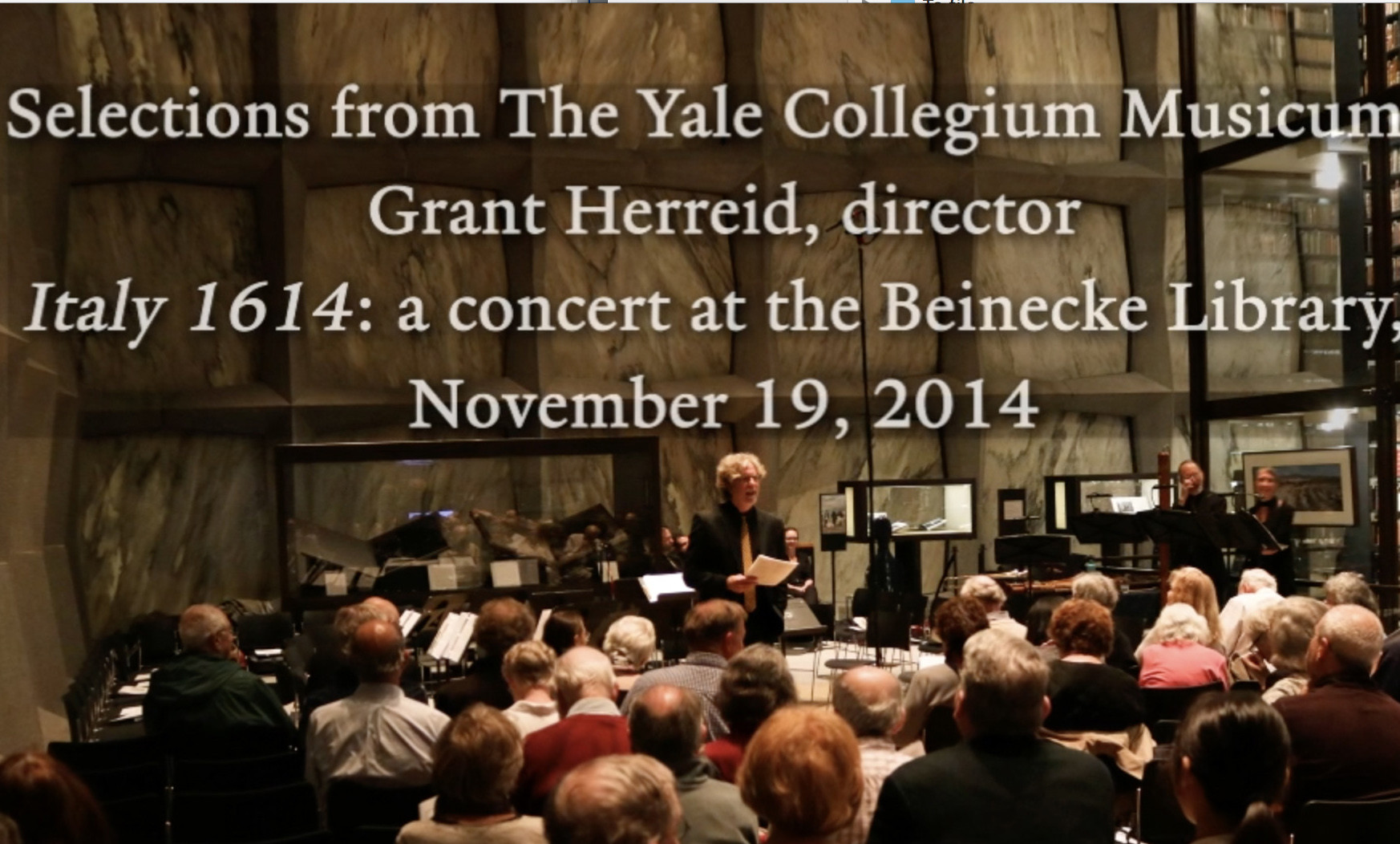Selections from a concert performed by the Collegium on November 19, 2014, at the Beinecke Library:
Italy 1614: New Trends in Part Song and Monody
Musical Explorations of the Madrigal and Motet
by Monteverdi and his Contemporaries
Founded by composer Paul Hindemith, the Yale Collegium Musicum was among the first ensembles in this country dedicated to the performance of music from the 12th through the 18th centuries. Hindemith, an early champion of historical music, led the group in twelve performances from 1943 through 1953, conducting an array of singers and instrumentalists made up of his own students and musicians from the community. The popularity of the Collegium and its performances during this period was attested to in a student survey: “The Collegium Musicum is apparently regarded as the most outstanding musical experience … at the University.”
This tradition of student and community involvement in innovative performances of early music has carried on through the years under several directors. In 2002 Collegium director Richard Lalli initiated a collaboration with the Beinecke Rare Book and Manuscript Library. Since then most Collegium concerts have been held at the Beinecke and highlight the library’s rich holdings of historical music and literature. Professor Lalli also created a class entitled The Performance and Analysis of Early Music. Students enrolled in the course, mostly non-music majors, form the nucleus of the Collegium, many exploring an early instrument for the first time. Now led by early music specialist and faculty member Grant Herreid, the ensemble continues its historic tradition in performances featuring voices, viols and other early strings, lutes, keyboards, and historical winds.
From the program notes for the concert:
In the year 1614 several collections of musical offerings chanced to come to light from Italian presses, some of which continued to push the envelope in terms of expressive singing. In his fifth book of madrigals (1605) Claudio Monteverdi was the first composer to include an instrumental basso continuo line, allowing a freer use of solo and duet writing as the continuo, including harpsichord and/or theorbo, could provide the harmonic structure when several voices dropped out. Monteverdi continued this practice in his sixth book of madrigals, published in Venice in 1614, of which the Beinecke Library holds an original copy of the alto part book. Monteverdi had famously written for the stage with his operas L’Ofeo and L’Arianna, and in his sixth book of madrigals he was able to introduce a dramatic, operatic element of solo song and dialogue into the vocal polyphonic texture of pieces like ‘A dio Florida bella’, ‘Misero Alceo’, and ‘Presso un fiume tranquillo’.
